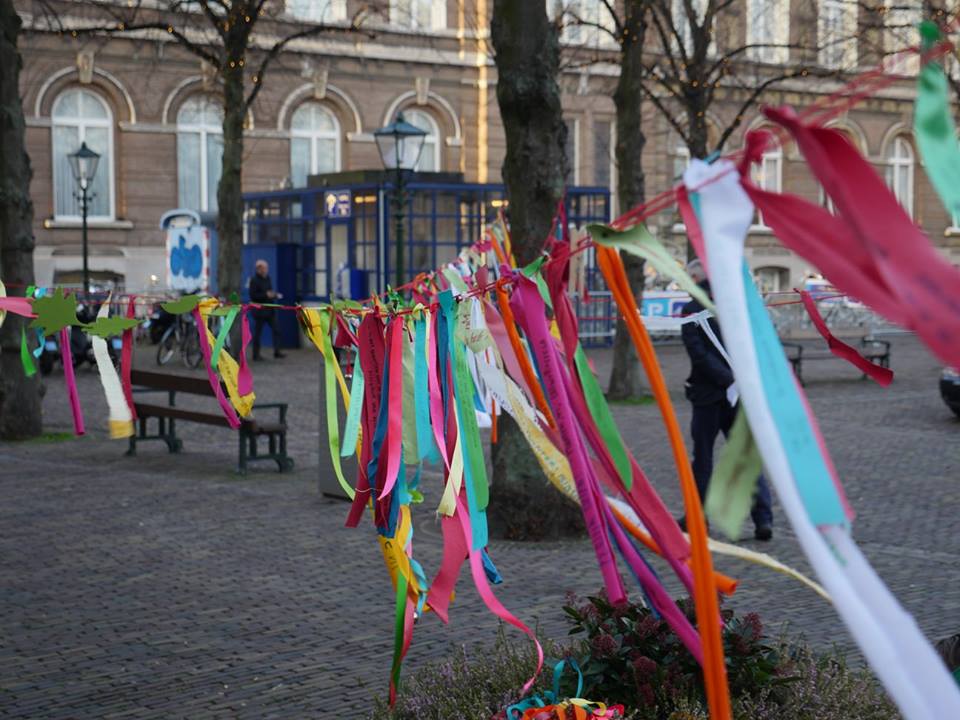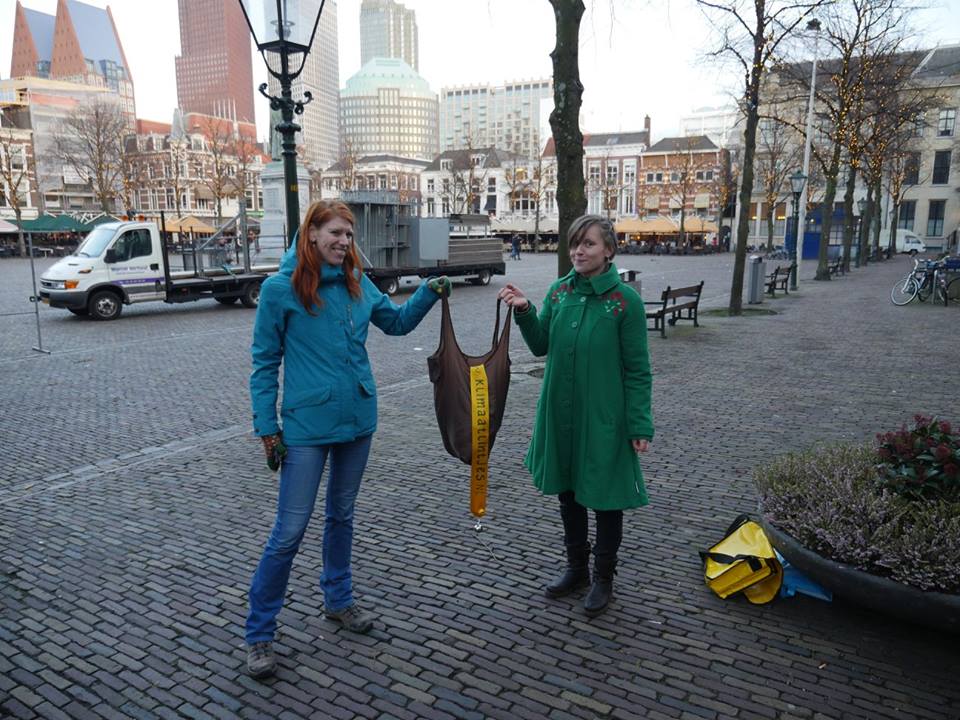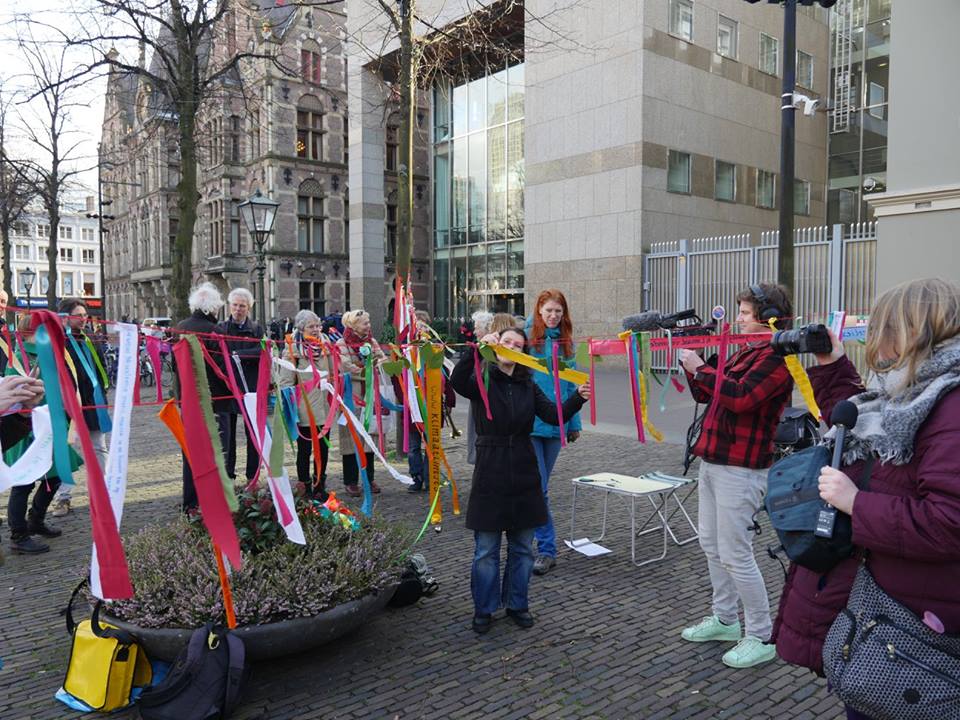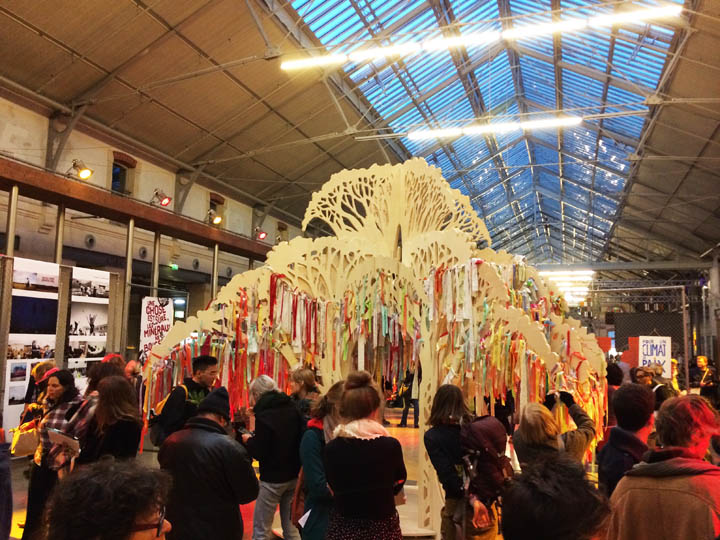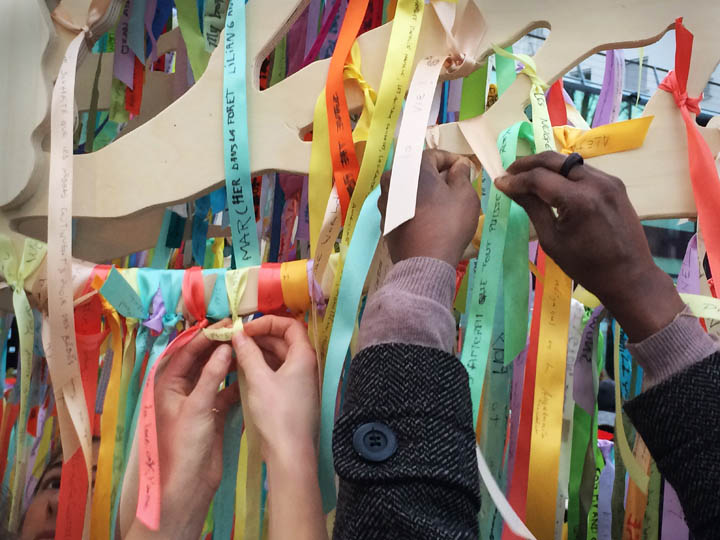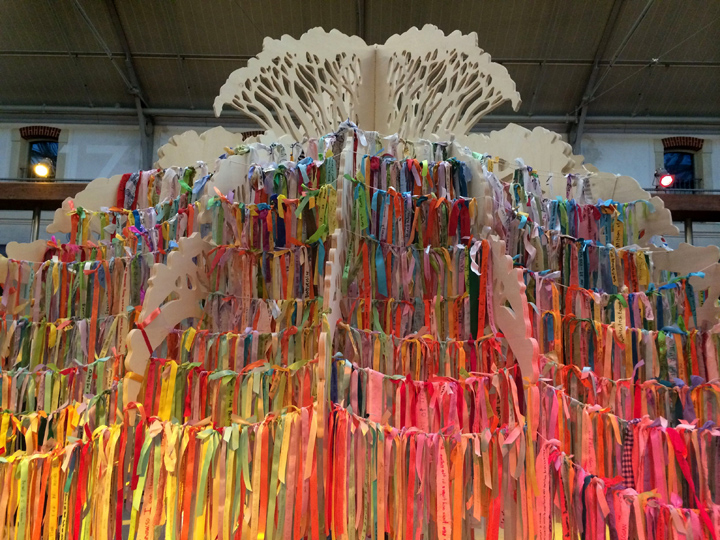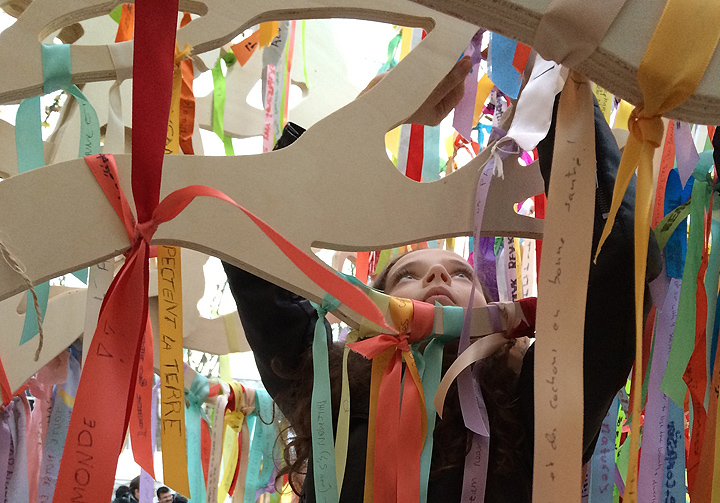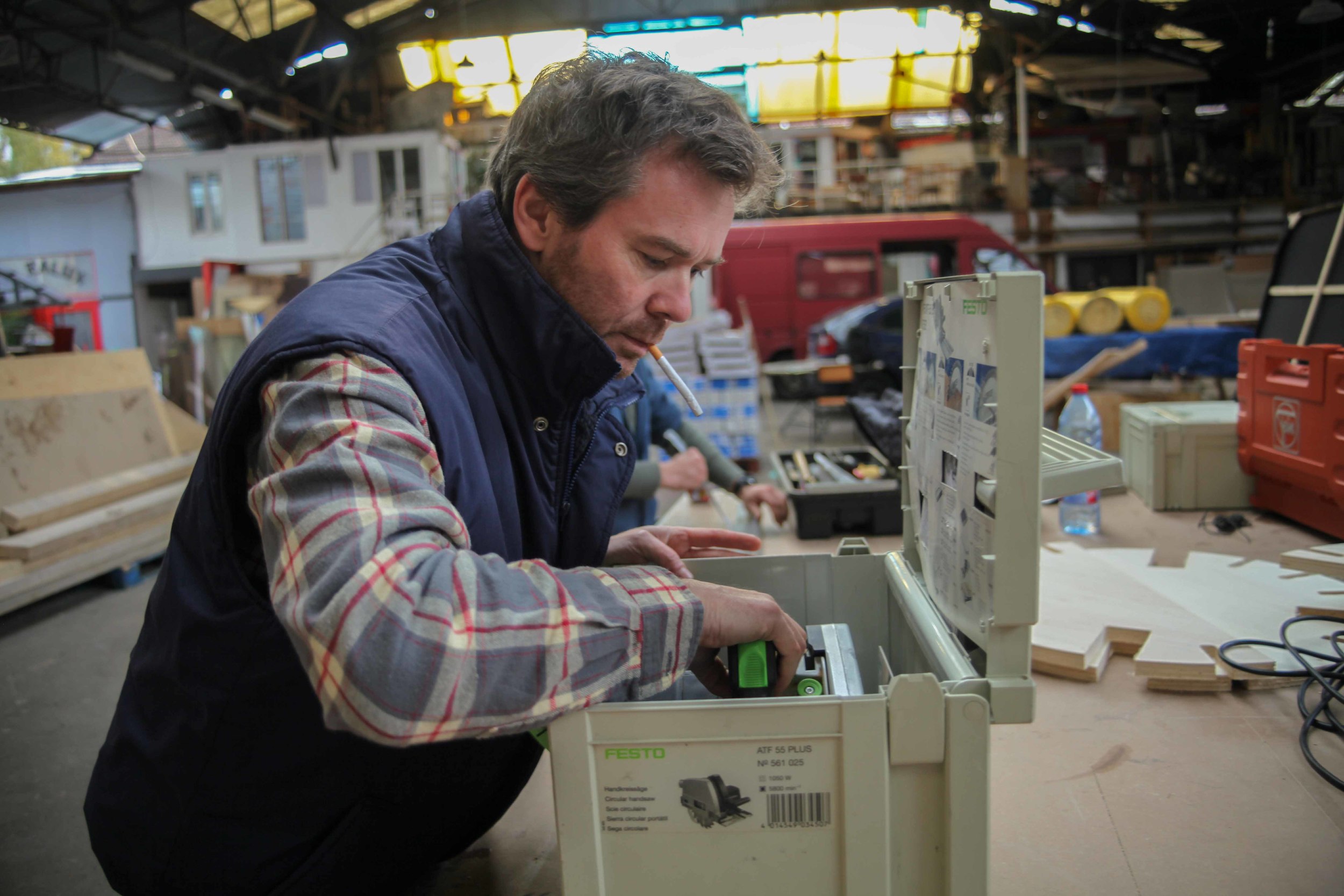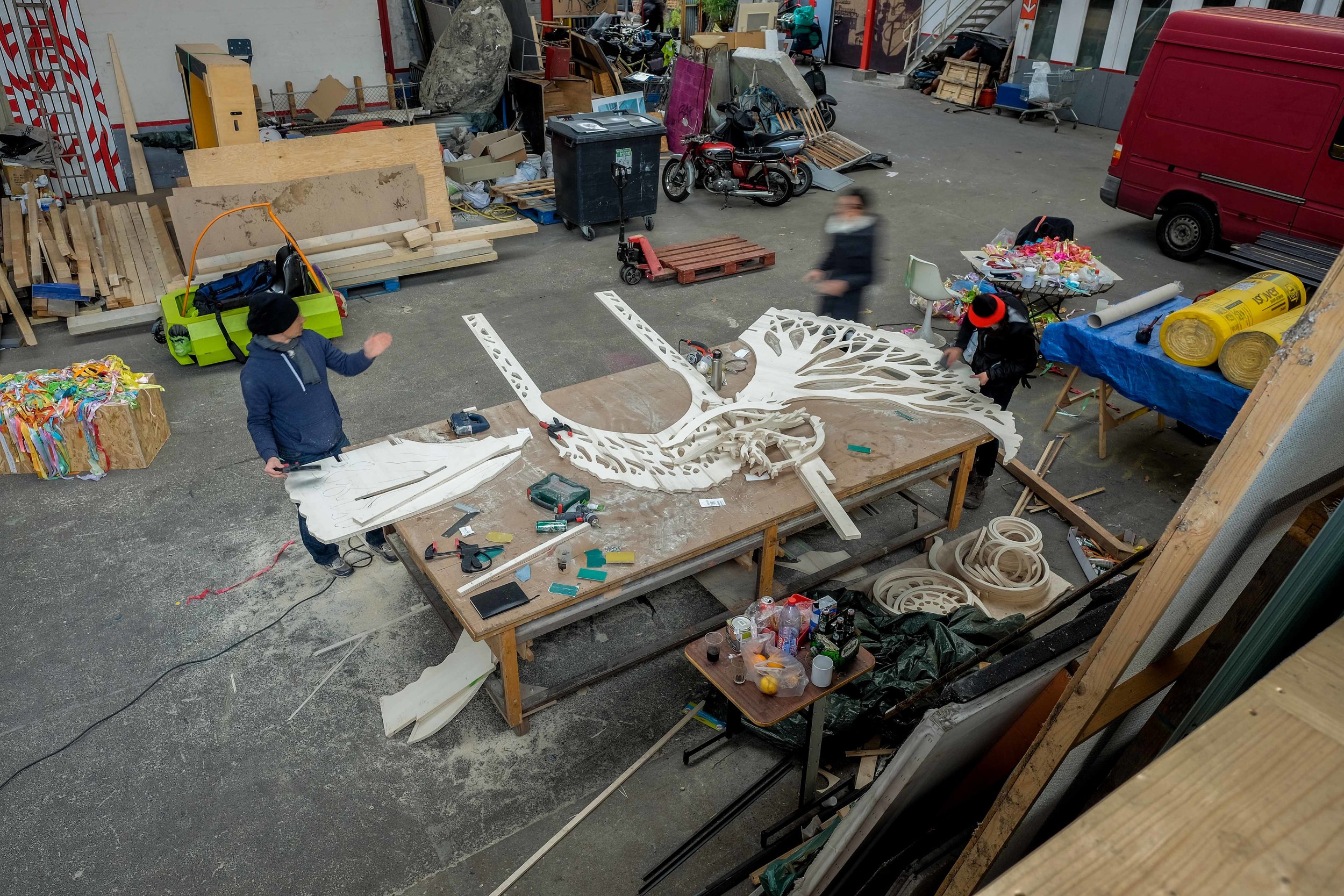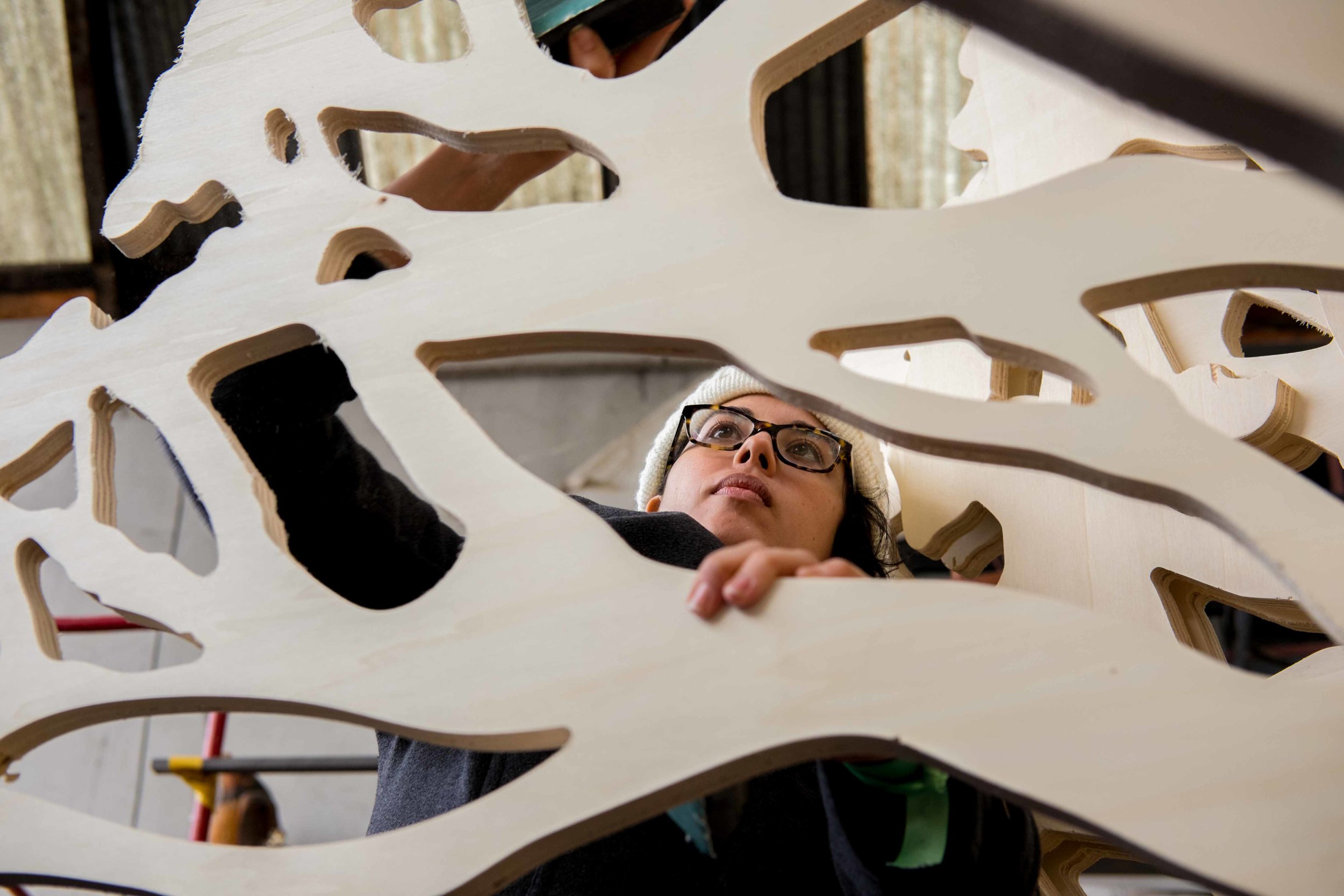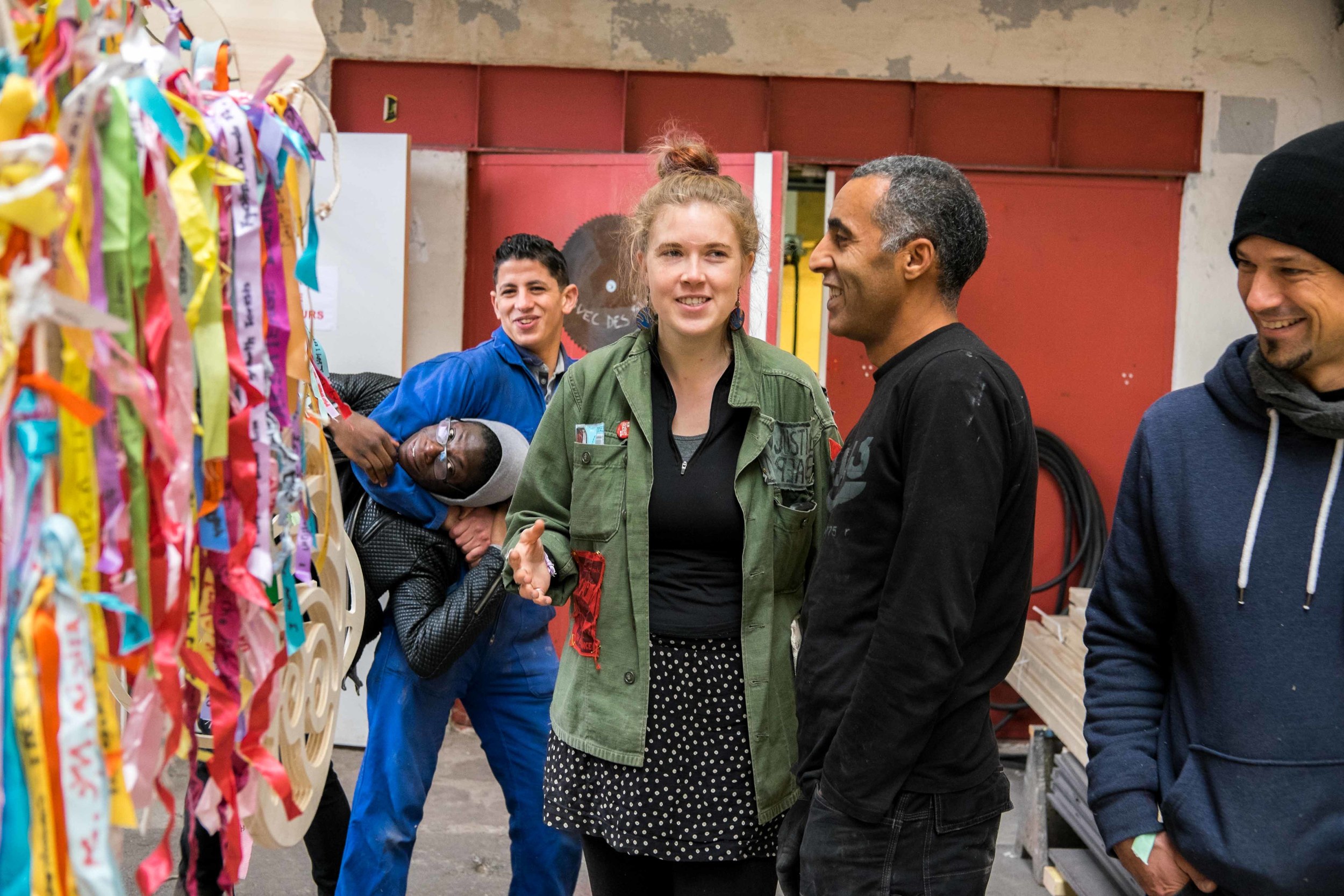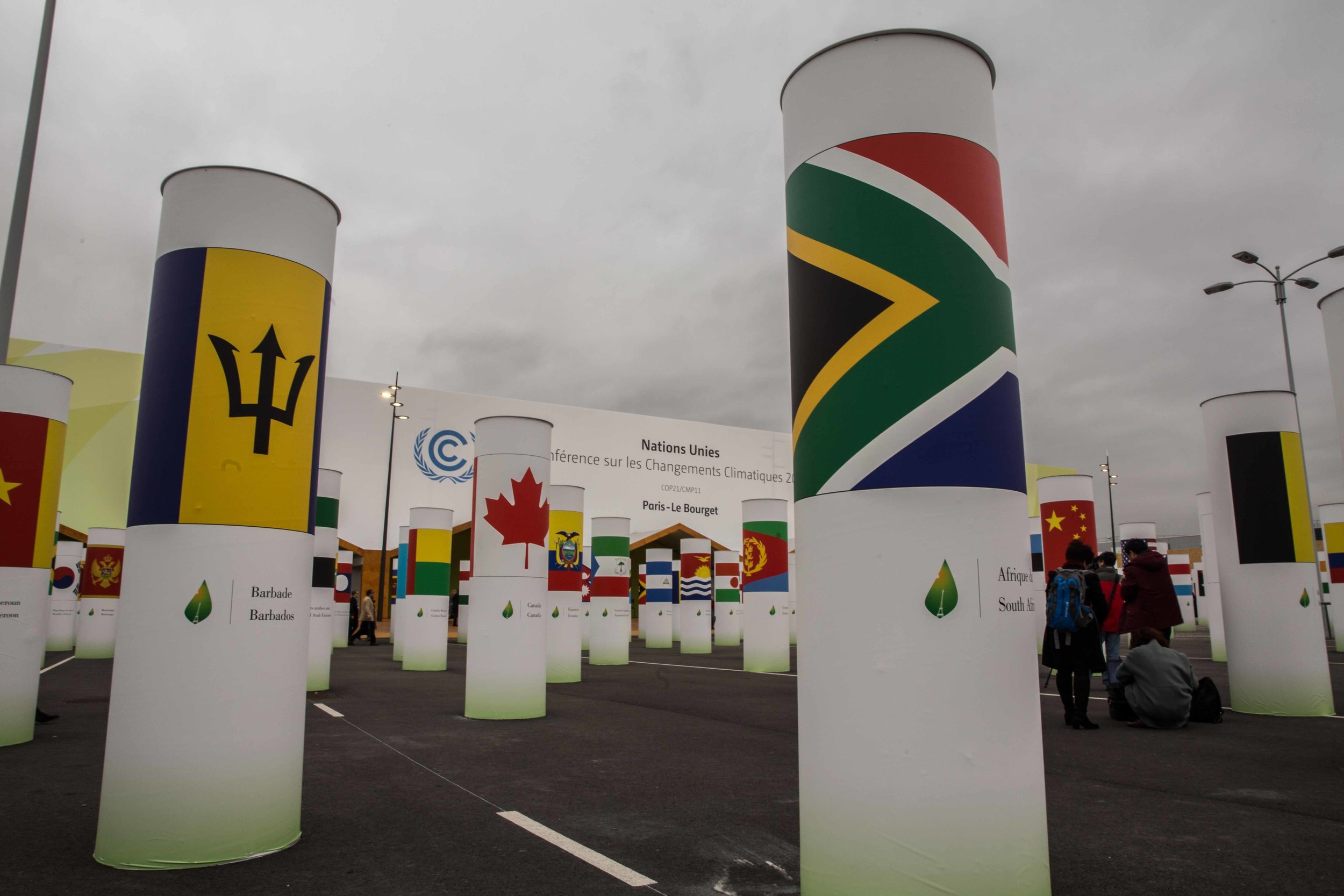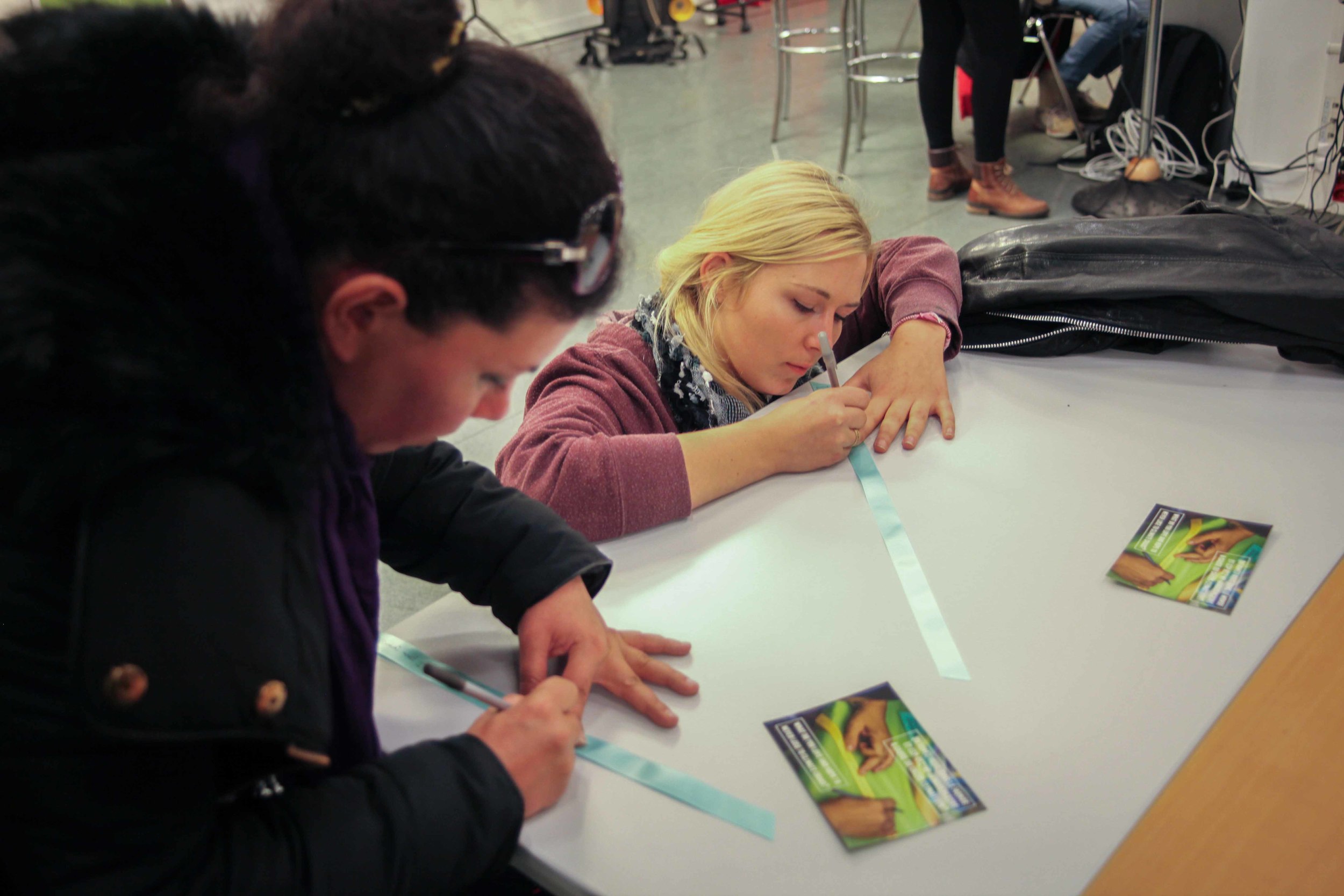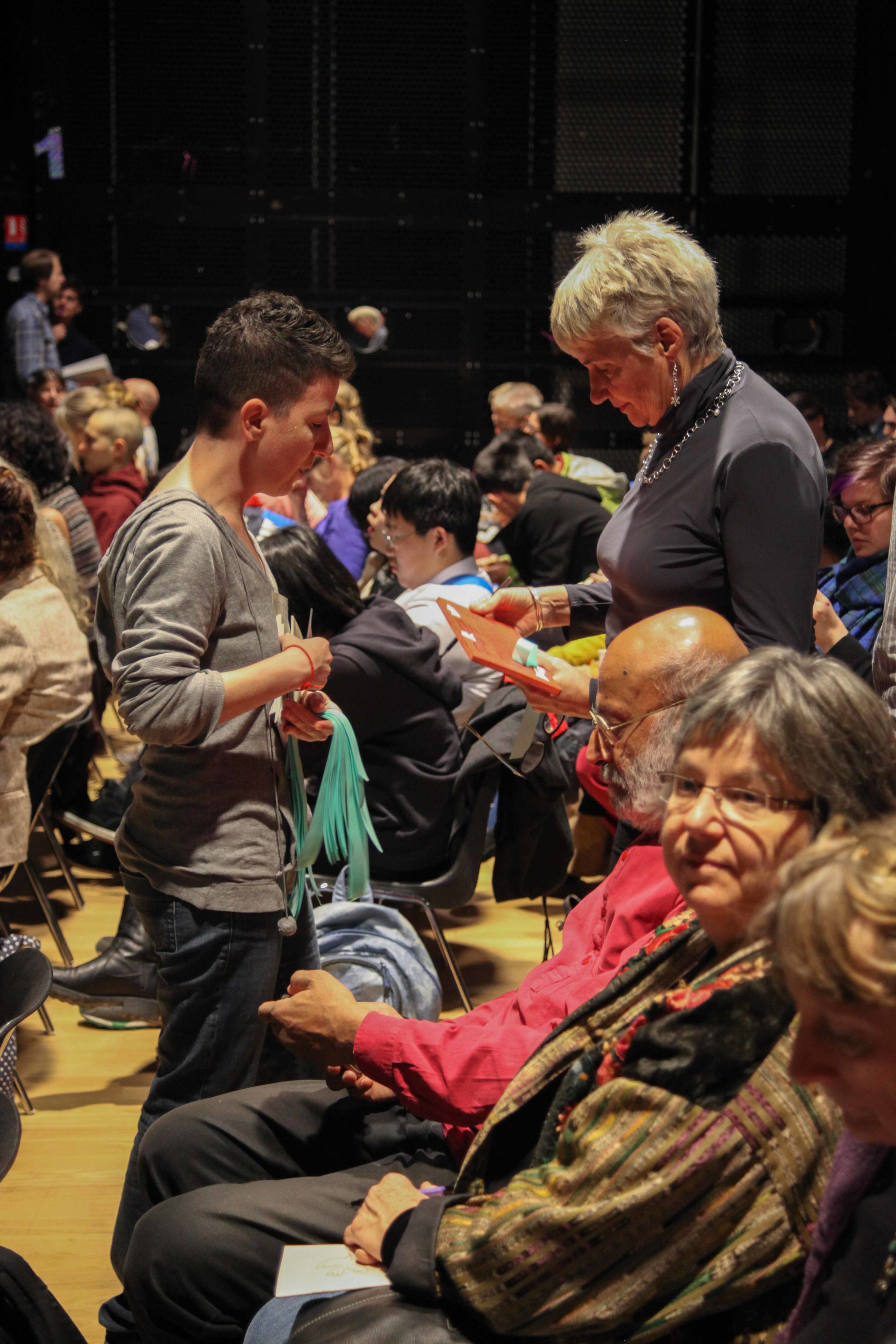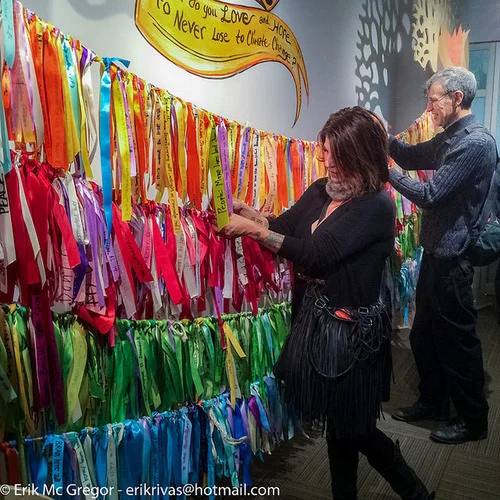Here are our daily updates from the innerworkings of the Climate Ribbon arts and ritual team in Paris during the COP 21, November-December 2015. You can also check out news coverage of the Ribbon Tree at these links: Democracy Now!, AJ+ , The Irish Times, The French Ministry of Culture, Buzzfeed.
Opening post by LJ Amsterdam, daily updates by Rae Abileah, Andrew Boyd, Kate McNeeley
Before leaving for Paris, I asked many of the young people from my organizing community in upstate NY what they loved and hoped to never lose to climate chaos. Here’s what some of them wrote:
The smell of the grass at dawn after it has rained – David, 21, Kampala, Uganda
Going to my grandpa’s house and taking the canoes through the miles of swamps – Collin, 25, North Adams, MA
My home country and all its history – Matteo, 17,Naples, Italy
As the protector of these ribbons, I wrapped their climate cares to my wrists and carried them in my pockets across the ocean, grounded by the gravity (even as I’m buoyed by the levity) of what they, as young people walking into this world, stand to lose.
They stand to lose their future. I stand to lose them. We are linked together on this mission.
These were just a few of the thousands and thousands of ribbons that made their way to Paris last November and December, as part of the Climate Ribbon effort, a global storytelling project that uses art and ritual to help us move from climate grief to climate action.
Ribbons came from all over the world, in assorted boxes, envelopes, and hand-deliveries. There was the box from a school in Finland, a Priority Mail package from a church in Michigan, a box of hundreds used in a streaming banner in a Seattle march, little envelopes from children and families across three continents. My compatriots on the project, who’d been receiving ribbons for almost a year and half, stuffed thousands of them into air compression bags and packed their knapsacks to the gills to get them through airline security as they flew in from New York. Not to mention the 25,000 blank ribbons that awaited us in Paris. One week before the UN Climate Summit, the COP21, began, the ribbons, and their human caretakers, converged in Paris to build a giant tree, the container for the ribbons and ritual, and to put up Climate Ribbon displays throughout the city.
November 26-28 - The 11th Conference of Youth, Parc des Expositions de Villepinte
by Kate McNeeley
Upon arriving in Paris, the Climate Ribbon’s first installation was at The Conference of Youth (COY 11) – an international gathering of young leaders designed as a counterpoint to the official UN Climate Summit. Rae and Kate installed a low-fi, but high-impact, iteration of a climate ribbon “wall” composed of rope and wire. Located just beyond the entry to the conference, the collection of ribbons invited participants to connect first with their hearts and to ask themselves why they were there, before heading into the various spaces of the conference. COY11 ran 6,000-strong, and by the end of the four-day gathering, the Climate Ribbon wall was adorned with messages from young people from Philippines, Chad, Tahiti, Haiti, and the world over.
Rachel, Walter, and I met Carl, 14, a young activist from Syria currently living in Orleans, France, who proffered a climate ribbon that highlighted the deep connection between conflict and climate chaos. What Carl loves and is afraid of losing is his home country, because of "all the pollution of the bombs that fall in Syria." For many families in Syria, he explained, the risk comes with every breath: "Syria is a very hot country and it’s cold in the winter… with the bombs there is no electricity and with the pollution the people can't breathe." Carl used his ribbon to make his struggle visible. He told us, "nobody has really written about Syria and maybe in COP they [the UN] will see this and think about Syria too."
Continue reading the rest of this blog...



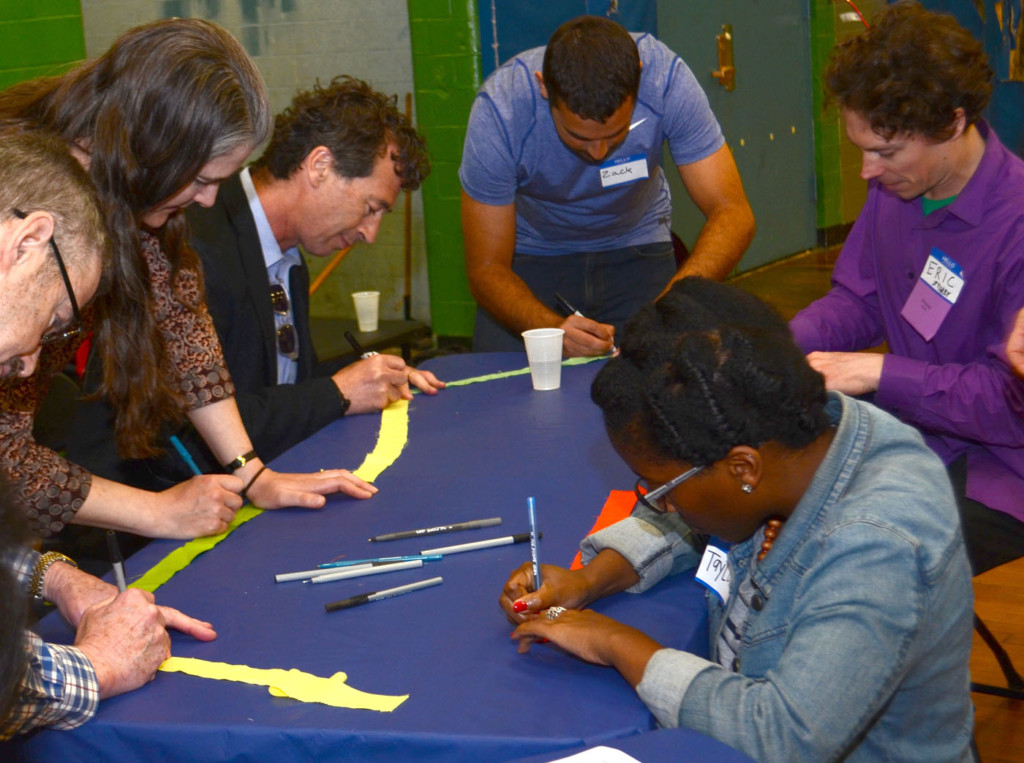
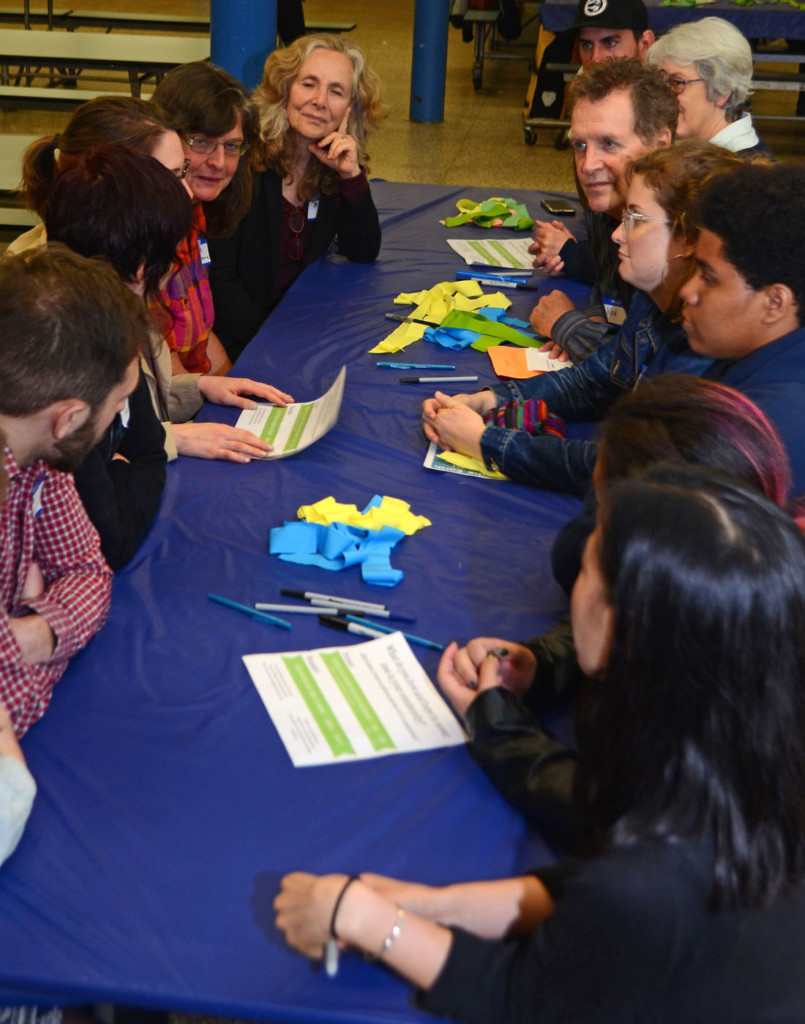

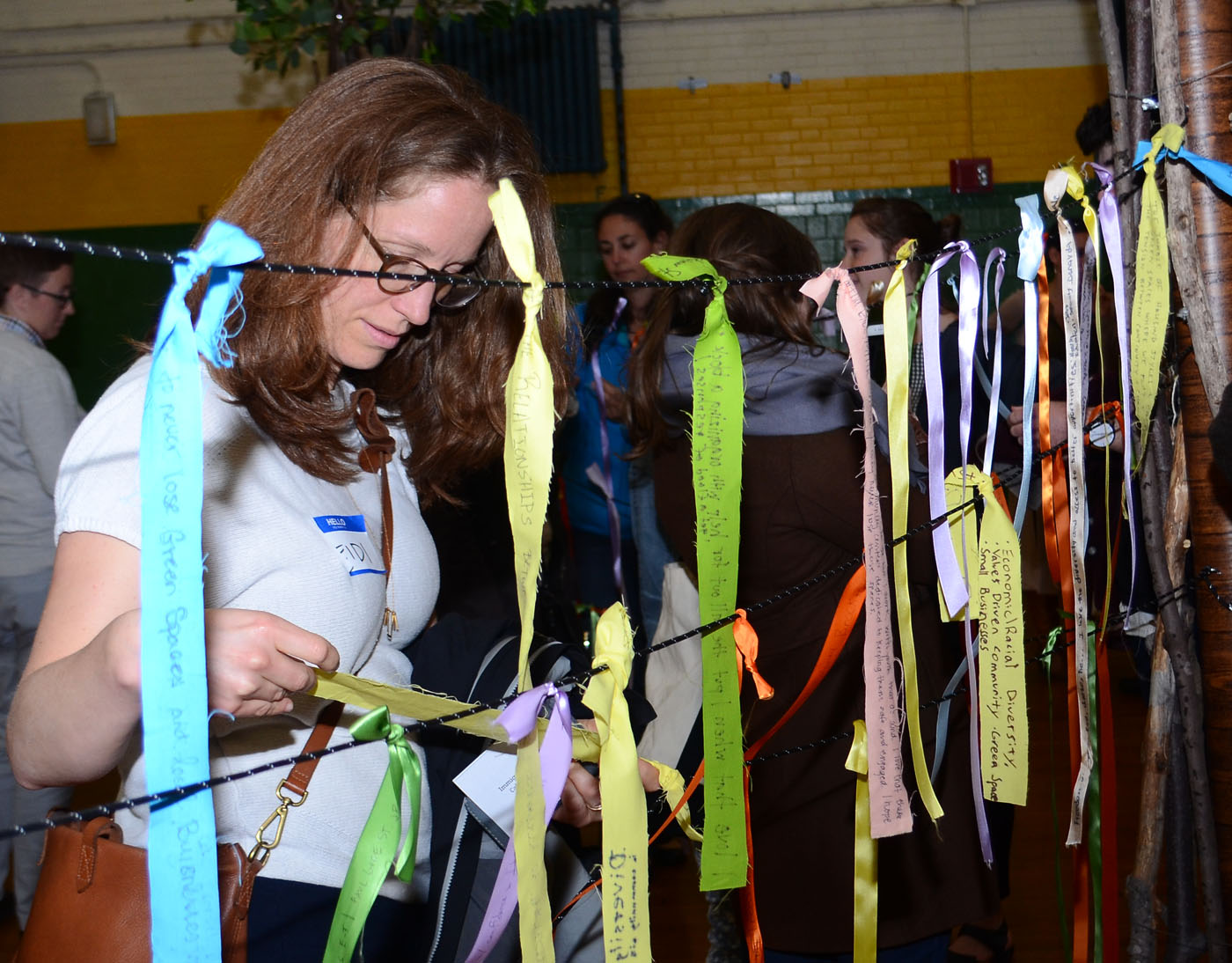
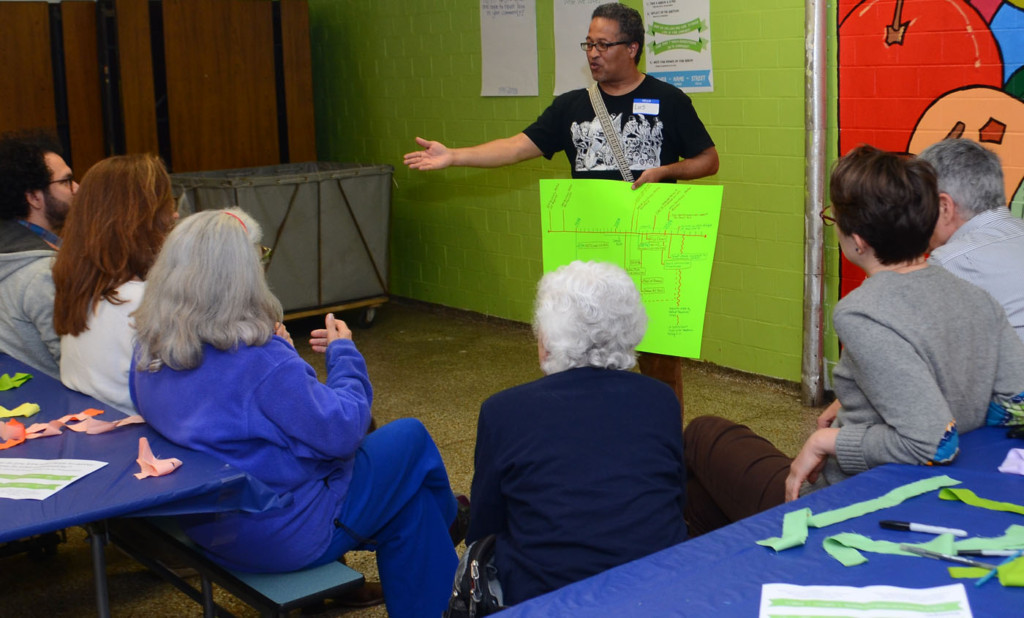
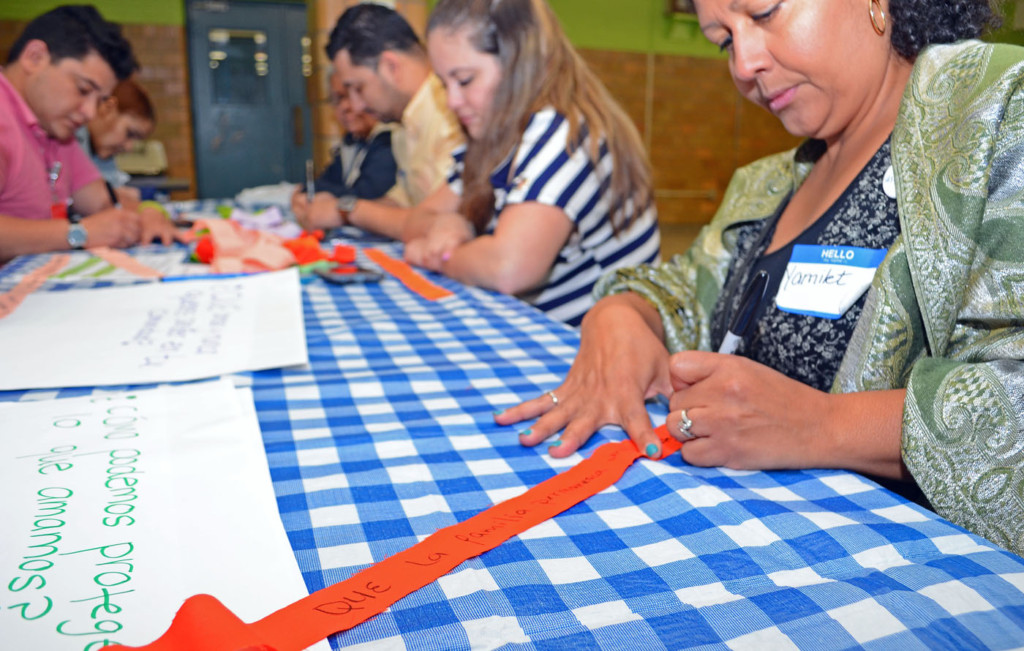
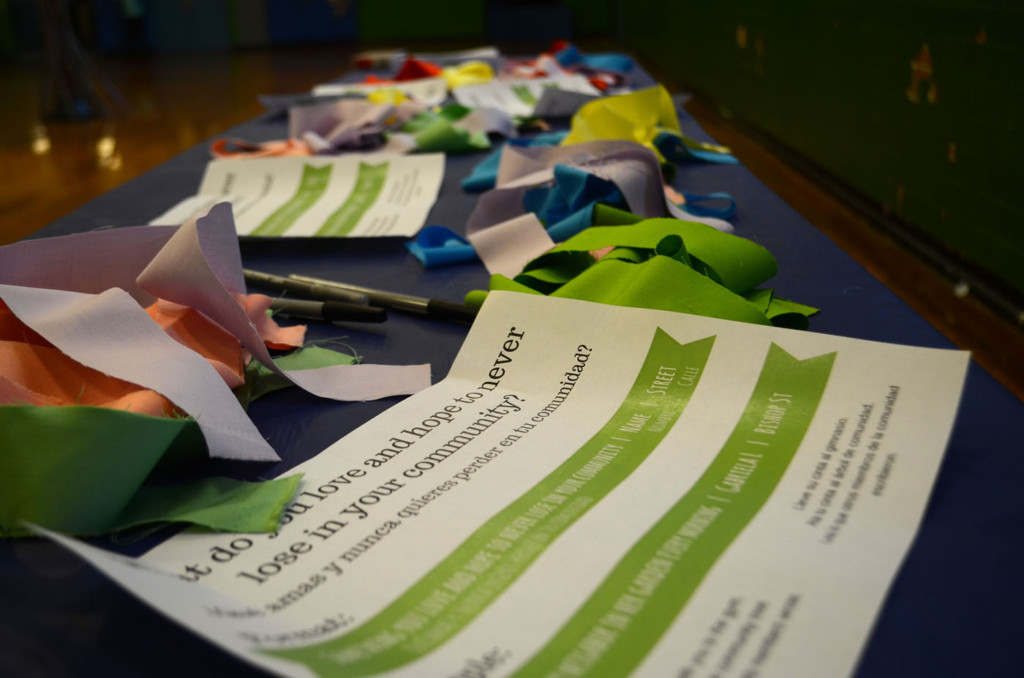
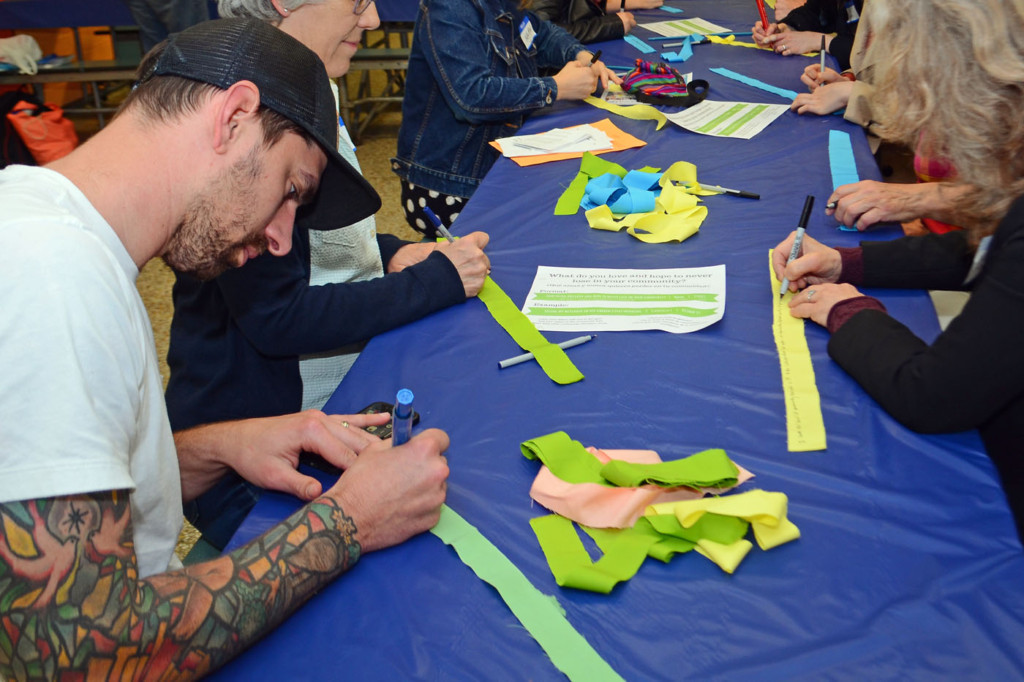
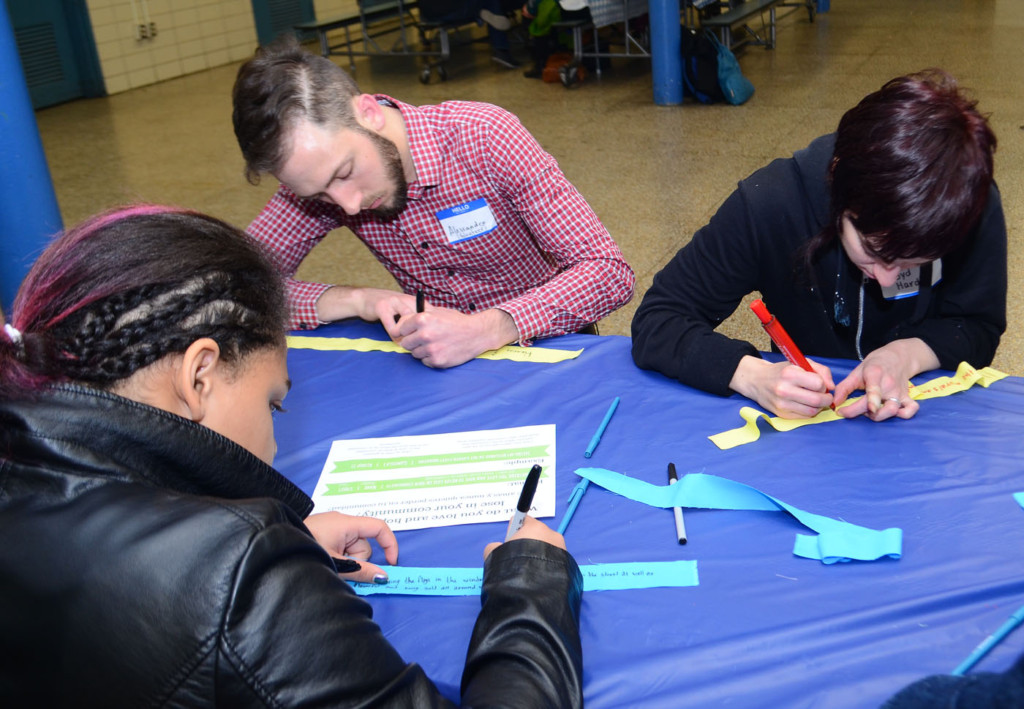


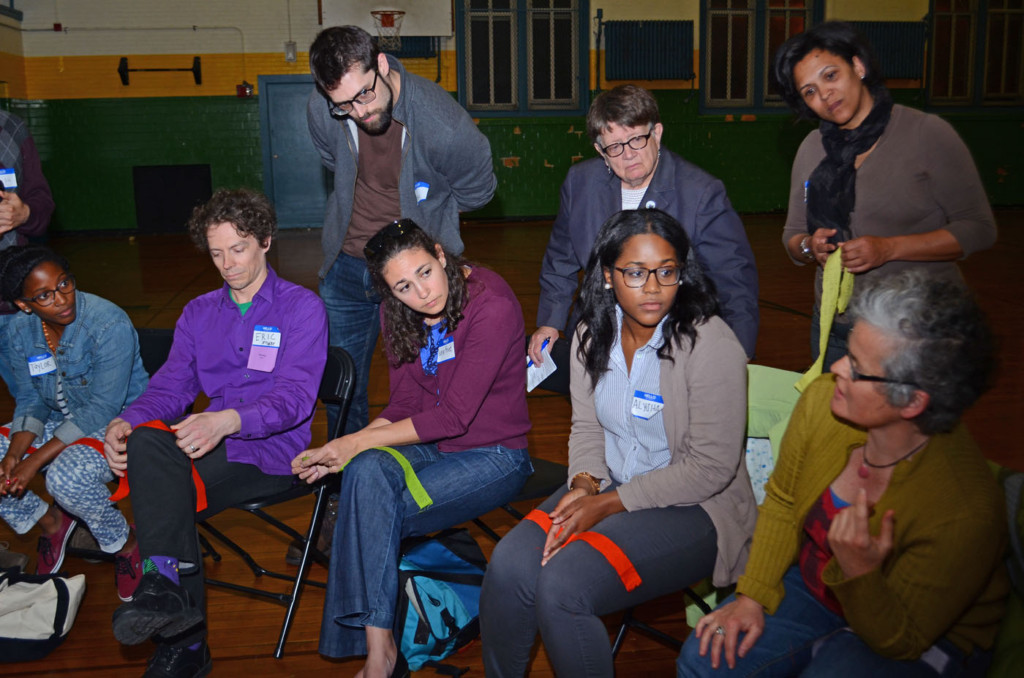
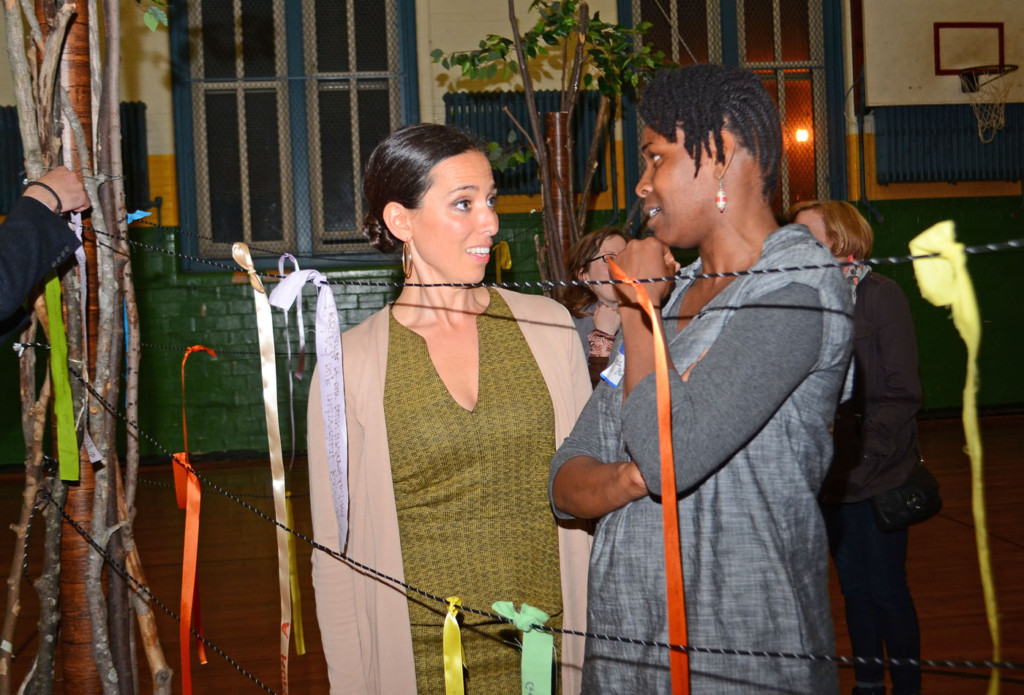
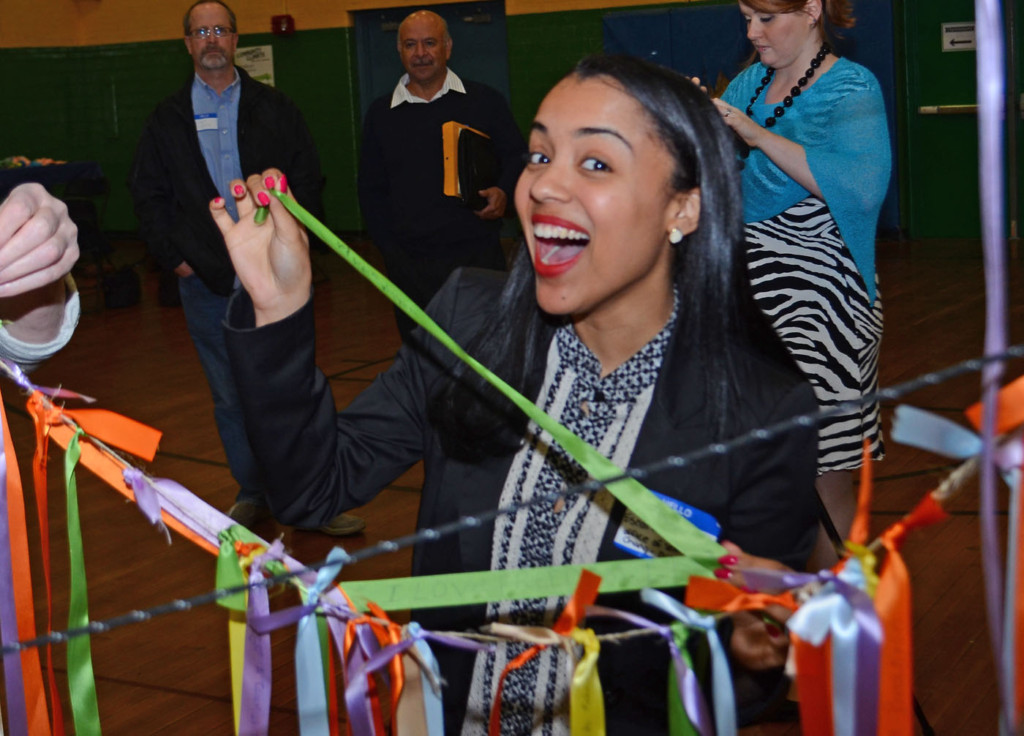
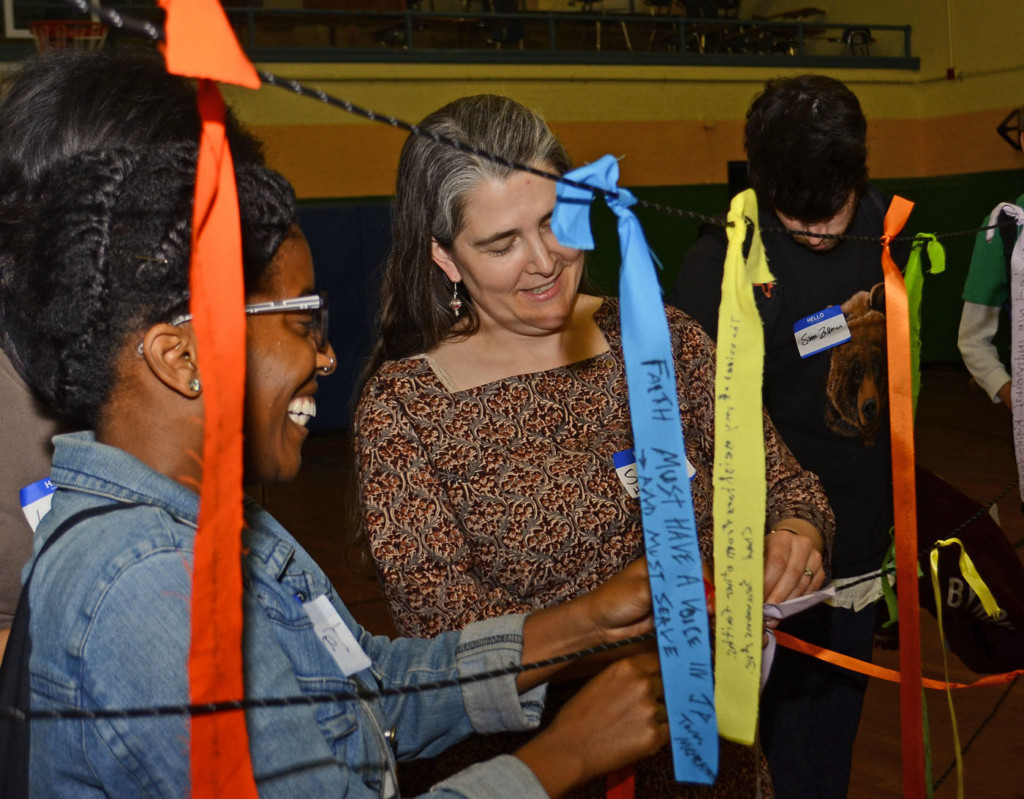
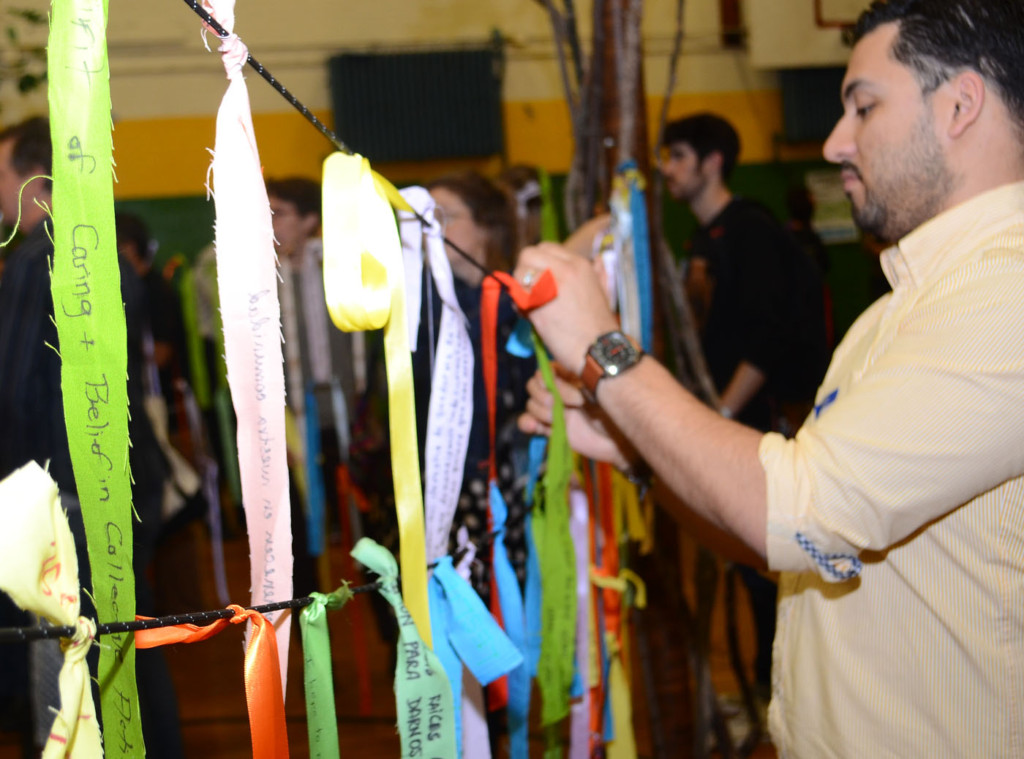
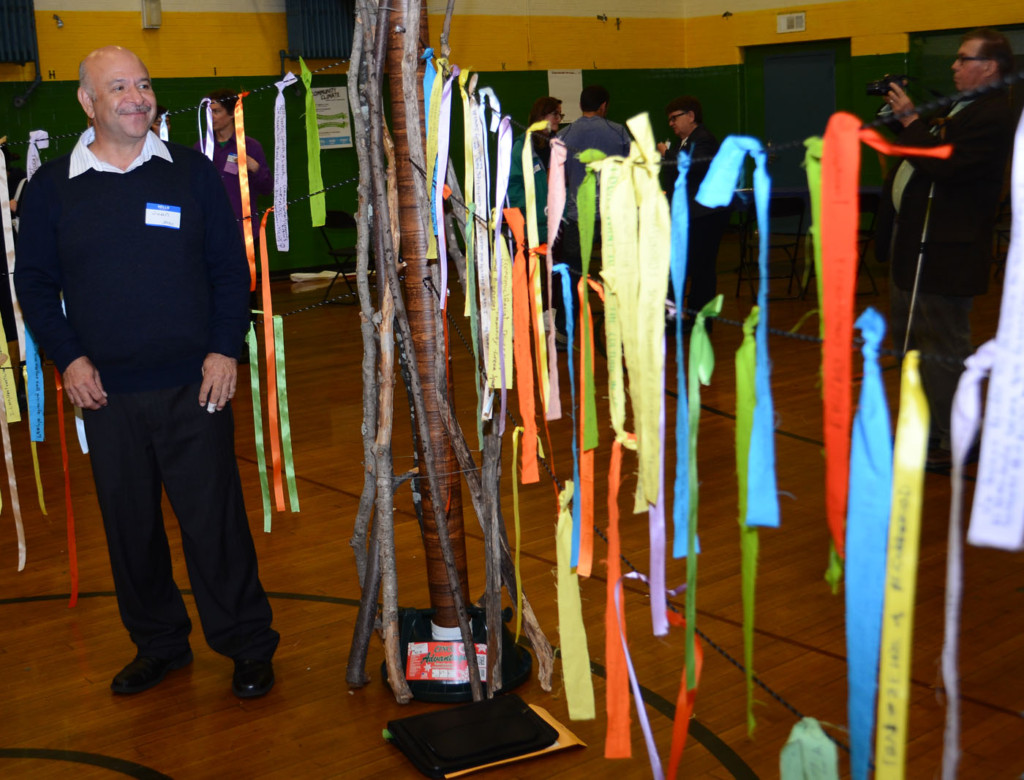
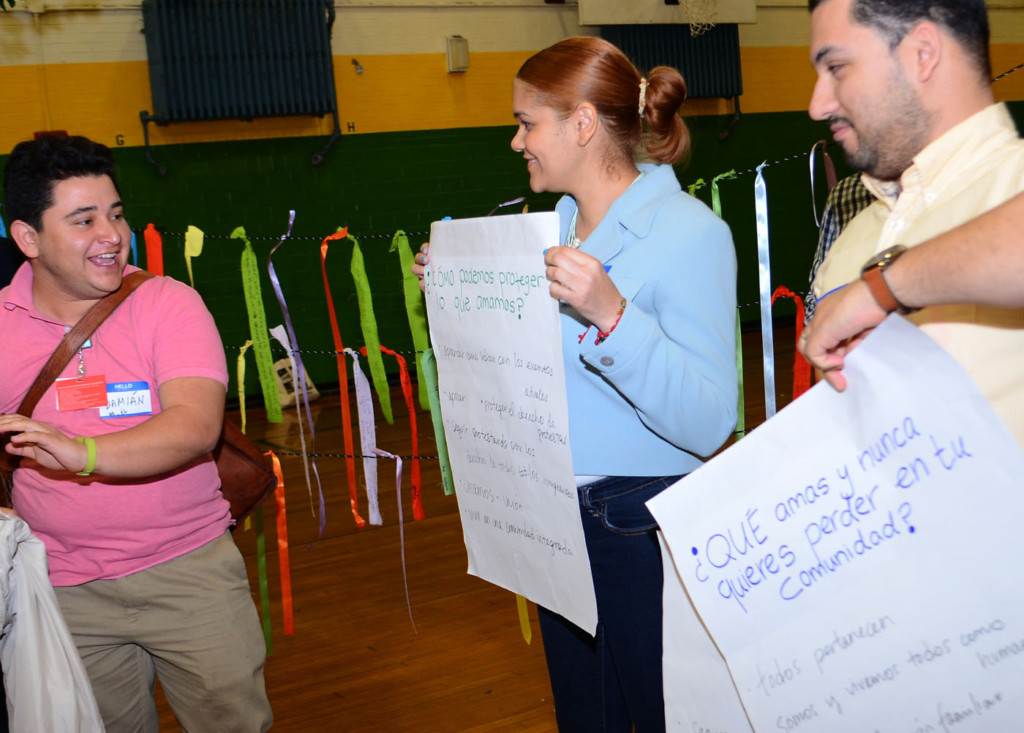
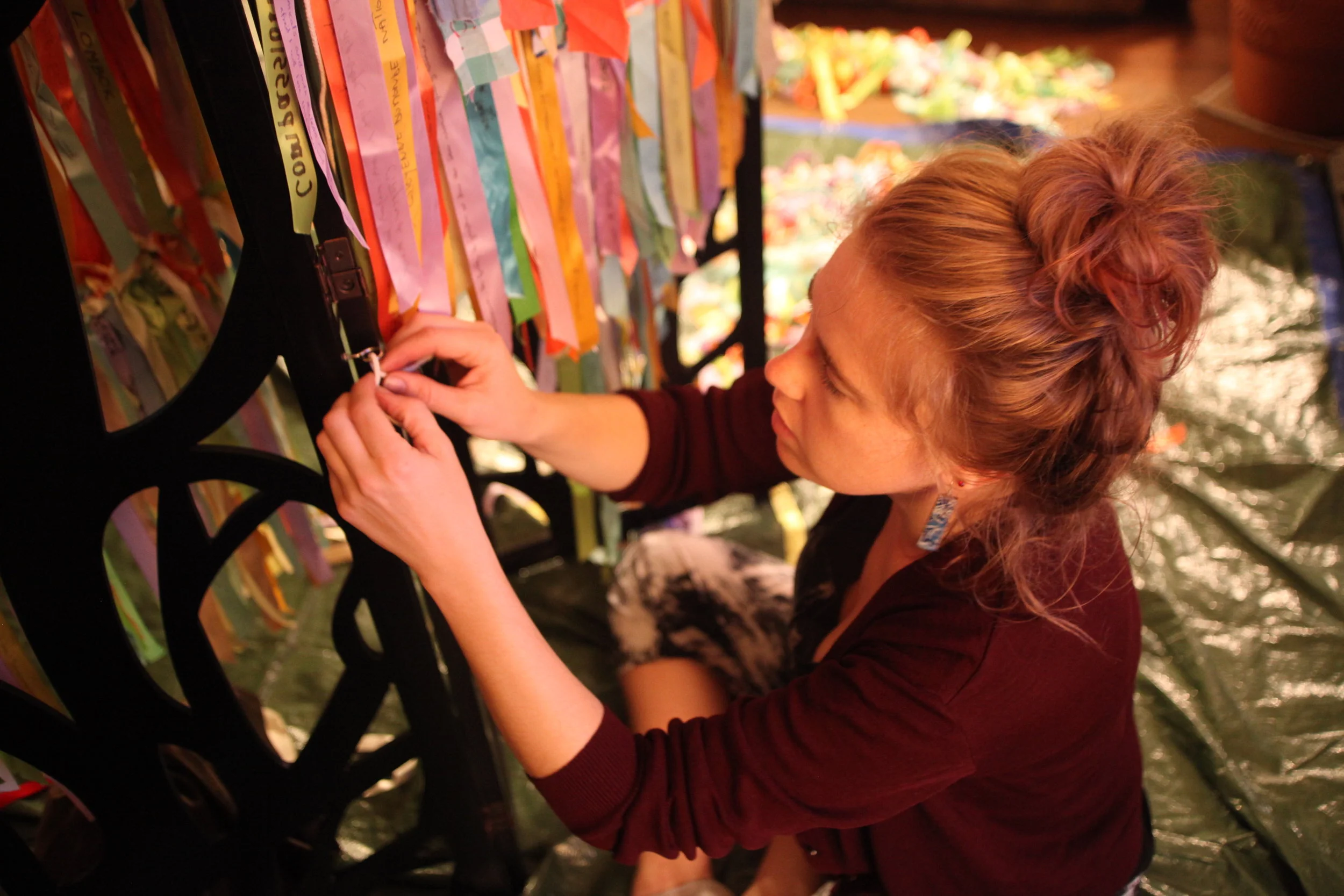

![Climate Ribbon co-creator Kate McNeely screws in hooks to tie string between the hinges of the folding screen. Want to bring this design to your community? Email us (climateribbon [at] gmail [dot] com) if you have questions on how to build it, …](https://images.squarespace-cdn.com/content/v1/56005941e4b017b5db4fcf1f/1502321733650-2E0N8XCVRI94MNDMP09I/image-asset.jpeg)

